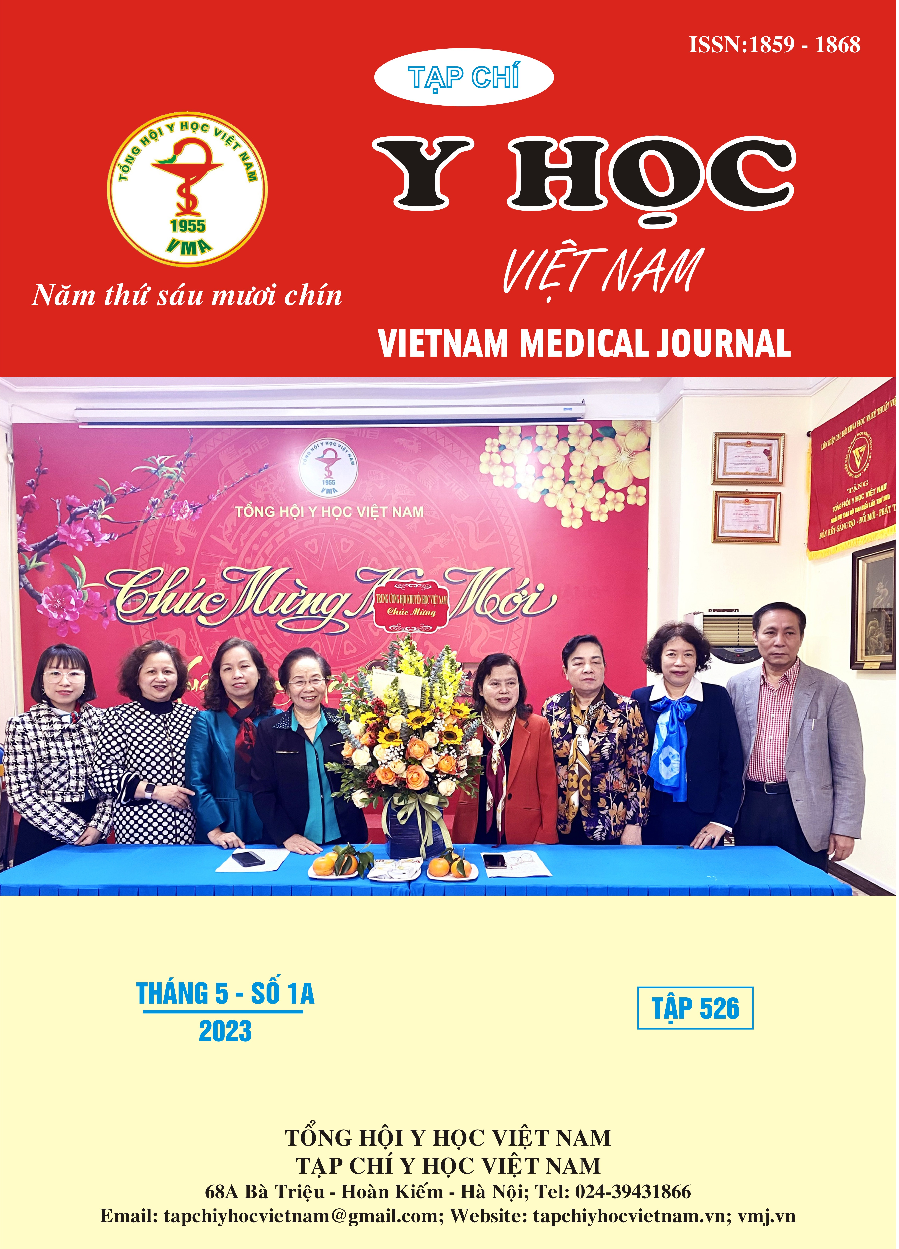SOME CLINICAL AND PARACLINICAL CHARACTERISTICS OF SUPRAVENTRICULAR TACHYCARDIA IN CHILDREN AT THE EMERGENCY AND ANTI-TOXIC DEPARTMENT, VIETNAM NATIONAL CHILDREN'S HOSPITAL, PERIOD 2021-2022
Main Article Content
Abstract
Objectives: To describe some clinical and paraclinical characteristics of supraventricular tachycardia in children at the Emergency and Anti-toxic Department. Research subjects and methods: A prospective cross-sectional and retrospective description of 50 patients diagnosed with Supraventricular tachycardia (SVT) at the Emergency and Anti-toxic Department, Vietnam National Children's Hospital. Results: The age group ≥ 1 year old accounted for the majority (76%). The most common functional symptoms in children < 5 years old were irritability and poor appetite (accounting for 64%), while in the group of children ≥ 5 years old with palpitations (76%) with the difference between 2 groups had a statistical significance (p<0.05). Regarding physical symptoms: acute heart failure, acute respiratory failure, hepatomegaly are mainly seen in the group of < 1 year old. On electrocardiogram, most cases have narrow QRS (94%) and average QRS time is 71.2 ± 21ms. Serum NT-ProBNP levels were mostly increased, accounting for 89.2% of cases. Decreased heart function accounted for 18.2% of cases and there was a difference between the 2 groups with shock and without shock (p<0.05). Conclusion: The clinical symptoms of supraventricular tachycardia in children are varied, non-specific and depend on age. Most patients have a narrow QRS complex on the electrocardiogram and there is an increase in NT-ProBNP levels in patients with supraventricular tachycardia.
Article Details
Keywords
clinical, paraclinical, supraventricular tachycardia, Vietnam National Children's Hospital
References
2. Hoang Van Toan, Dang Thi Hai Van, Nguyen Thanh Hai (2021). Clinical and subclinical characteristics of tachycardia in children at the National Children's Hospital. Journal of Pediatrics; 14 (1), 43-49.
3. Massin MM, Benatar A and Rondia G (2008). Epidemiology and outcome of tachyarrhythmias in tertiary pediatric cardiac centers, Cardiology. 111(3), pp. 191-6.
4. Clausen H, Theophilos T, Jackno K, et al (2012). Pediatric arrhythmias in the emergency department, Emerg Med J. 29(9), pp. 732- 737.
5. Przybylski R, Michelson KA, Neuman MI, et al (2021). Care of Children with Supraventricular Tachycardia in the Emergency Department, Pediatr Cardiol. 42(3), pp. 569-577.
6. Hội Tim mạch học Việt Nam (2010). Khuyến cáo 2010 của hội tim mạch học Việt Nam về chẩn đoán và điều trị một số rối loạn nhịp tim thường gặp. Nhà xuất bản Y học, TP Hồ Chí Minh, tr. 195-205.
7. Brugada Joseph, Nico Blom, Georgia Sarquella-Brugada, et al (2013), "Pharmacological and non-pharmacological therapy for arrhythmias in the pediatric population: EHRA and AEPC-Arrhythmia Working Group joint consensus statement", Europace. 15(9), tr. 1337-82. (7)
8. Li Meiting Li Xiaomei, Ge Haiyan, et al (2021). Evaluation of adenosine triphosphate in emergency cardioversion of paroxysmal supraventricular tachycardia in children, Chinese Journal of Practical Pediatrics. 36(13), pp. 990 -994.
9. Jeon Y J, Kim S H, Lee J S, et al (2019). Abdominal Pain as an Initial Manifestation of Paroxysmal Supraventricular Tachycardia in Children, Iranian Journal of Pediatrics. 29(2).
10. Bùi Gio An, Võ Công Đồng (2009). Đặc điểm chẩn đoán và điều trị cấp cứu rối loạn nhịp nhanh ở trẻ em nhập khoa cấp cứu bệnh viện nhi đồng 2. Tạp chí y học thành phố Hồ Chí Minh, 1(13), tr. 114-120.


